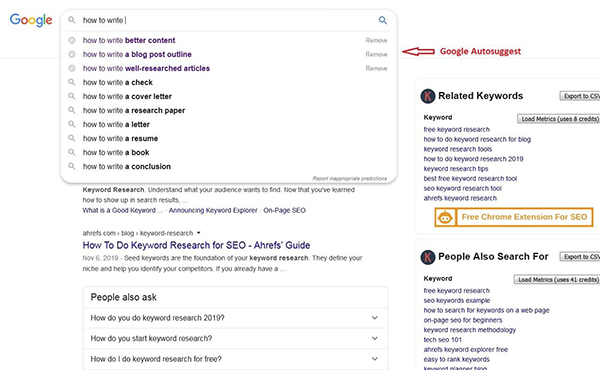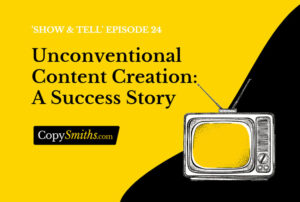Home » Blog » Make Your Blog Stand Out: Write Article Outlines

Make Your Blog Stand Out: Write Article Outlines
Want your blog to stand out? Well, you’re not alone. The competition is fierce. Which is why you need to provide top-tier content so you keep attracting backlinks and high rankings.
This is where writing article outlines can help. They will introduce a structure so you remember to put only the best ingredients in your blog posts.
If you look at content marketing as storytelling, then an outline is the glue that holds the story together.
But there’s more to it. Many businesses are struggling to satisfy the growing demand for content. So quantity also matters.
Outlines can help you write quicker so you overcome an operational lag in your content creation.
Now, let’s see how to write outlines so you get the desired results.
How to Write Article Outlines so You Get Better Results From Your Blog Posts
The internet is brimming with expert tips on how to write quality content that ranks, converts and sells. And with good reason.
Everyone’s competing for attention. And having a thriving blog can help you break through the digital noise and get your slice of the pie. Fair enough.
Now, the way to produce the results that you want is a different story.
A great place to start is by writing outlines.
Blogging experts agree that you should write outlines before getting to the actual writing. This way, your blog post will turn out better and the desired results will follow.
As Niel Patel shared in one of his blog posts on how to become a better writer:
“Before you sit down to write a blog post (or any content for that matter), you should develop an easy-to-follow outline. This isn’t optional – it’s an essential step.”
What you end up with is an organized, well-thought-out writing piece. One that can outperform those that didn’t stem from an outline.
So, let’s get down to the nitty-gritty of writing outlines.
List Any Keywords You Want to Include
Sometimes you’ll start an outline from scratch. In most cases though, it’s for those topics that you’ve already written tons of articles about.
This is an easier tack. Because you already have an idea of what questions or tips your audience might be interested in. You know your agenda.
But as any digital marketer knows, not everything in the garden is rosy when it comes to creating content.
So, sometimes you’ll need a little incentive from the outside.
Doing quick keyword research can help you choose the direction of your outline (and ultimately your post). You can use it to come up with your subtopics.
It can be as simple as doing a custom Google search.
- Go to Google Search and start testing a few different keyword combinations.
- Then refine your search terms by looking at what Google Autofill has to suggest.
- Check out Google Related Searches at the bottom of the SERP for more ideas.
Include SEO Elements When Outlining Your Blog Post
You might be thinking to yourself: do I need to think about SEO on top of everything else while writing my outline? The answer is yes.
As someone who wants their blog to rock, you need to think about some SEO aspects as well. And it’s best to do this early on in the game.
There are a few simple SEO tactics to use in your outlining phase.
Bill Widmer, a serial entrepreneur and SEO expert, created a quick checklist to follow in his YouTube video on outlines.
Here’s how to optimize your content right from the get-go:
- Make your title clickable. Offer a clear takeaway in your title. Include phrases such as “Beginner-Friendly”, “PDF”, “Case Study”. Think of creative ways to include numbers. “15 Taco Recipes You Can Make in 15 Minutes or Less” is much better than “15 Taco Recipes”. Think data, percentages, traffic numbers, etc.
- Place your target keyword at the appropriate point in your outline. Use Ahrefs or Ubersuggest to look for relevant keywords, their monthly search volume, and keyword difficulty. Choose keywords that have a decent search volume and reasonable keyword difficulty.
- Use LSI Keywords. Head over to LSI Graph. Fetch a list of LSI keywords and use them in your subheaders where contextually relevant.
- Analyze your competitors. Use Ahrefs again to get a list of articles that compete for your target keyword. These are the articles Google picked as the most relevant for the reader. Learn from the best. Then learn how to beat them.
Check out Widmer’s video for more information.
Outline Your Article Body: Give the Readers What They Came For
When your topic goes off the rails, readers lose interest. And that’s the worst thing that can happen to your content. Because readers won’t stick around long enough to see your CTA and engage with your brand.
On top of that, lower dwell time affects your Google rankings poorly.
Here’s another reason writing article outlines is important. It helps you achieve clarity and flow.
So, lay out your ideas in a clear, straightforward way.
Also, when outlining your blog post, keep in mind that readers want benefits. They’ve come to your blog post because they want to solve a problem.
Help them find their desired solution. Think about how to state clear benefits to the reader. So when they’re done reading your article, they have actionable advice they can take onboard and try.
We have a host of articles offering specific solutions at CopySmiths website.
Here’s a sneak-peek for you to check out.
And that’s just the tip of the iceberg. We have a team of seasoned professionals that can help you create similar content for your blog.
The Pro Tip
Your end goal is to write an article body that walks the reader through your points to a logical solution. It’s the solution your product or service offers them – your final CTA.
Here are three simple steps that can help you achieve this:
- Know what action you want your readers to take. Will they discover, develop, save money, overcome something, etc?
- Know your readers’ pain points. Take their perspective. Figure out what frustrates, annoys and hampers them.
- Know what effect you want your article to produce. Make it clear to the readers exactly what results they will get if they choose your product or service as their go-to solution. Quantify the results with numbers.
Outline Your Introduction: Hook the Reader
An awesome introduction will get you off to a good start for creating a successful blog. It’s that important.
If your headline and your intro don’t hook the reader, nothing will. And your blog will sink into oblivion.
If your click-through rate is low and your bounce rate high, Google will flag your content as irrelevant and bury your website so that not even an enthusiast can find it. And that’s bad.
So, how to improve your introductions? Again, start with the outlining phase.
Try to come up with an interesting twist that would engage your audience right from the start.
Or take expert advice from Neil Patel. These are his seven strategies on how to write introductions. If done well, they can pull the reader in and make them want to stick around.
- Hit With a Controversial Opening, e.g., “Contrary to popular belief…”
- Offer the “Why” of Your Content – Focus on Benefits
- Lead With a Memorable Story
- Get Readers Nodding by Stating the Obvious
- Use an Analogy, Metaphor, or Simile
- Cite a Shocking Statistic
- Open With a Thought-Provoking Question
Make Your Blog Stand Out: Your Turn
Want to get results from content marketing? If so, you need to beat your competition, both in terms of quality and quantity. Striking the right balance between the two is how you build a blog that rocks.
Well-performing blog posts are those that grab attention and keep it as your reader gets through the article. All the way to making the desired action proposed by your CTA.
The moral of this story is that writing article outlines sets the groundwork for those well-performing blog posts. And helps you produce them at a much faster rate.
Or you can perform better by outsourcing your content creation to other companies.
CopySmiths
I'm Katrina McKinnon, founder of CopySmiths and Small Revolution. In my 20 years of experience, I have helped online businesses create high-performing content specifically on an eCommerce store's blog. Find me on LinkedIn and Twitter.

CopySmiths offers the best blog writing services for online stores.
If you'd like us to write blog articles for you, click here.
Most Recent
- 3 Bold Questions You Should Ask When Hiring A Content Writer

- 5 Practical Reasons You Should Use a Blog Post Template

- 4 Amazing Benefits of Using a Title Generator for New eCommerce Blogs

- 10 Awesome Bio Examples Your Online Store Blog Should Emulate

- 8 Basic Steps to Successful Content Development Every Time

Podcasts
Got a question?
Ask our friendly team about our article writing services.
Subscribe to CopyZine
Monthly, hand-picked stories of the best in eCommerce Content.






